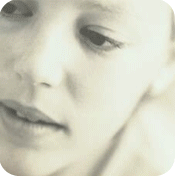Differences between DENS and TENS
DENS is a new electro-neurostimulation method, devised for the application to the outer skin. It is based on the treatment of refelexogenous zones and acupuncture points with electric impulses. The character of these impulses depends on the overall value of electric resistance (impedance) of the treated skin zone.
These are the novelties of this method:
Monitoring of the outer skin impedance (MOSI) is applied
- Two impulses are used, comprising two phases, respectively. One of these phases reacts to the impedance of the skin.
- The treatment algorithm is optimized through the assessment of the dynamics by which the change of impendance in the respective skin area is characterized.
- Both the stimulator’s internal as well as outer electrodes can be repositioned during the treatment session.
The electrodes of the DENS appliance are constructed in a way that allows to restrict the effect, so that uncontrolled flow of the electric current through the tissue is prevented. At the same time the independent energy supply makes guarantees that the equipment is safe to use. So it is possible to perform this treatment method not only in medical establishments, but also at home.
1. The main difference as compared to TENS consists in the fact, that all DENS apparatuses apply monitoring of the outer skin impedance. MOSI is applied with the aim of assessing the dynamics that characterizes the change of the electric parameters in the area ot the skin, to which the electrodes are applied. The dynamics is evaluated by measuring the change of speed with regard to the capacity component of the impedance of the skin segment in question. The active component is not taken into account.
MOSI allows to realize the following programs:
- Detection and localization of latent trigger zones („screening“), which is determined through the differences of speed in adjacent areas.
- Minimal effective dose („MED“), that is determined through the „zero“ velocity level of a certain zone during the transition from the TEST mode into the THERAPY mode.
2. High effectivity through the lowering of the tolerance level The tolerance lowering effect (adaption) is not only reached through the alteration of the impulse’s form, but also through the modification of the stimulation parameters during the transition of the autonomic nervous system (ANS) from one phase to another (e.g. the „MED“ program).
As for the application of TENS, the parameters of the impulses can also be changed, but in this case there is no „connection“ to the reaction of the ANS, which can result in an unnecessary prolongation of the procedure. Accoringly DENS is more effective.
3. Wider range of application possibilities While TENS is mainly meant for the treatment of pain syndromes, DENS has broader therapeutic possibilities. It can be used for the correction of a whole spectrum of functional disorders.
Further aspects of SCREENING: Functional disorders of inner organs affect certain zones of the skin by changing the perception in these areas in a way that is uncharacteristic for a healthy organism and cannot be observed in the symmetrical zones or any other part of the body. These zones are called latent refelxogenous trigger zones. In contrast to active trigger zones, that are detected by the physician by questioning and examining the patient, latent zones are detected and localized with the help of diagnostic methods. These also include methods that take into account the electric skin resistance in the affected organ’s direct projection zone or in other zones of the segmentary or intrasegmentary innervation, which is possible through viscero-cutan and viscero-motoric communication.
Further aspects of MED: The program is meant for the minimization of treatment, through which a lasting physiological effect is achieved not only on the local, but also on the central level.


 Fisioterapia
Fisioterapia
